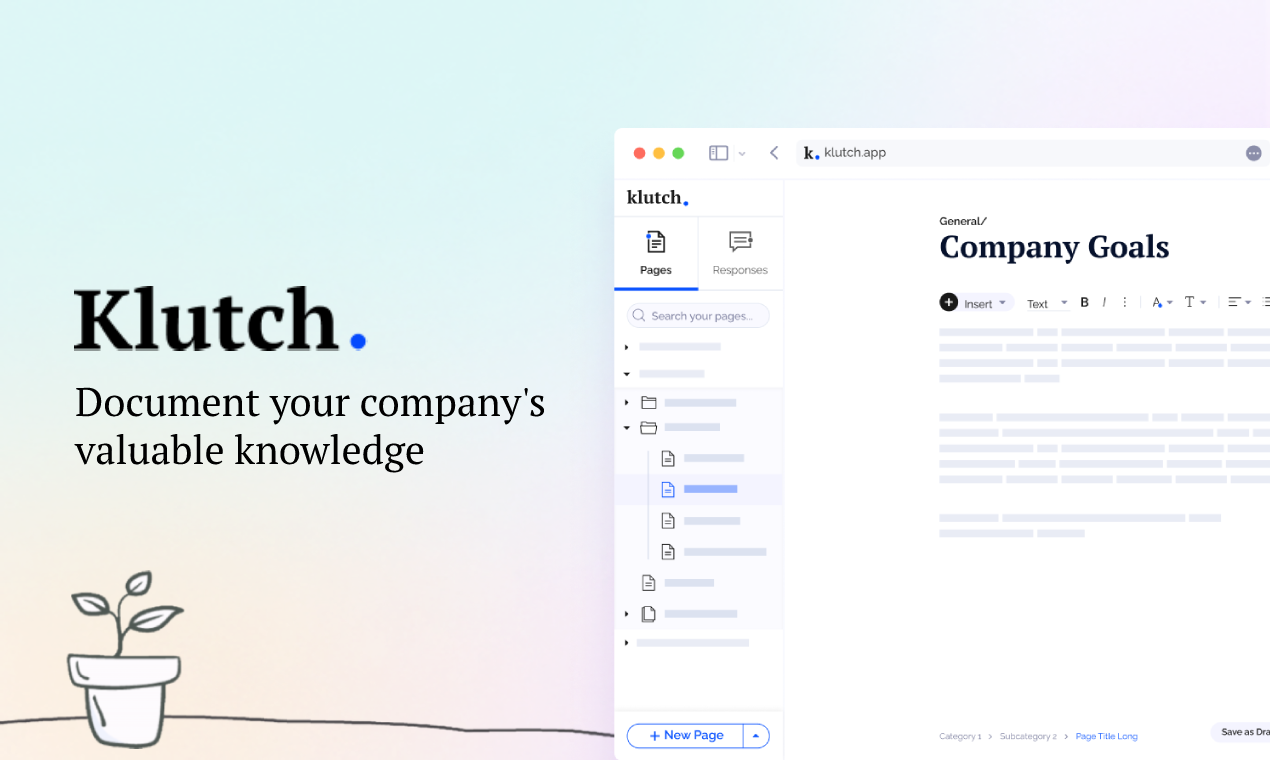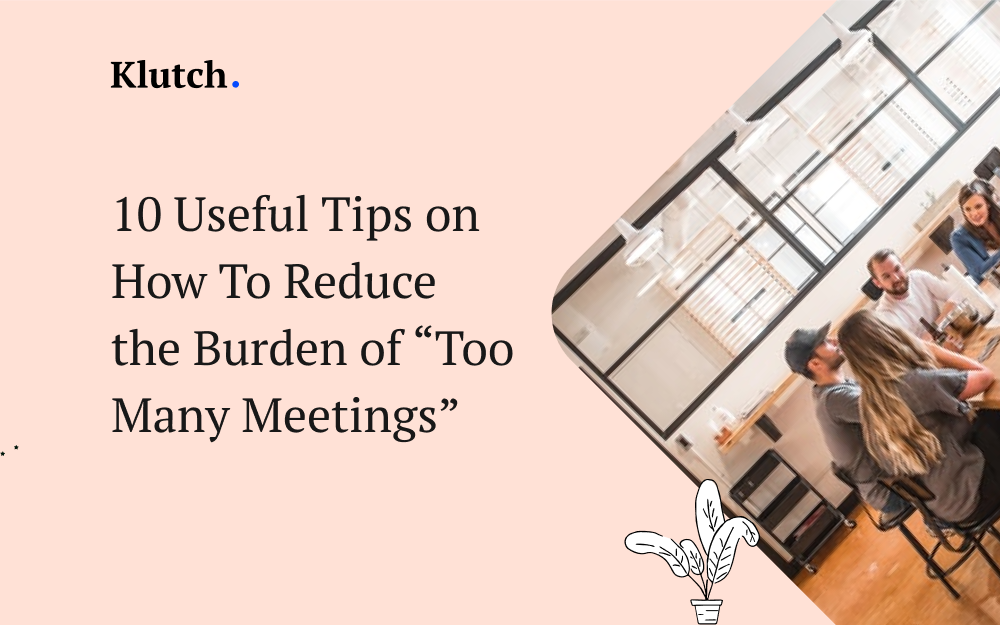Meetings are a great way to make sure the entire team is on board, and that everyone knows exactly what they are doing. A productive meeting can save you many hours of doing the wrong thing or repeating something that colleagues have already done.
However, the keywords are “productive meeting.”
There are times when being called for a meeting starts becoming more of a burden that interferes with productive work than anything else.
This problem, if left unchecked, can harm companies that are trying to reach their targets.
This article will help you streamline your schedule, by cutting down on excessive meetings, while at the same time, keeping all team members on the same page.
Why You Should Avoid Too Many Meetings
Once employees start to feel like meetings are a waste of time, it will be very difficult to achieve anything useful.
A good meeting needs everyone’s full attention and participation, without that, you might as well not call the meeting at all.

The unfortunate thing is that an ineffective meeting will only mean another one will need to be held again to address the same issues, which starts a chain reaction that will lead to people either not paying attention, or avoiding the meetings altogether.
Here are some reasons why you should try by all means to not schedule too many meetings:
-
Causes Boredom
Nothing kills the agenda of a meeting more than a bored audience. It’s hard not to get bored when you are meeting for the fifth time in a week to discuss the same issue.
If one meeting is not enough, then you should find other ways to tackle the problem without calling for another meeting.
-
Makes Workers Anxious
It is natural to feel a bit anxious whenever you sit down with your superiors at work, especially if you do not know what the agenda is. This anxiety affects some employees more than others.
By having too many meetings, you can negatively impact their ability to remain focused on important tasks.

-
Reduces Productivity
Not only do meetings directly take away from employees’ time to do their work, but even after the meeting is over, they still need a bit more time before they can pick up from where they left off at the same levels of productivity.
In the event of a very intense meeting, some workers can be so affected that they will remain unproductive for the rest of the day.
-
Makes You Seem Indecisive
Holding too many meetings to discuss issues that you could have handled yourself, or at the very least solved by sending a couple of emails, makes others think you are indecisive, and that is not a good image if you are in a project management position.
-
Can Be Discouraging
At times issues may remain unsolved due to a variety of reasons, which may have nothing to do with a lack of effort on the part of the employees.
In such cases, having meetings again and again to discuss those issues will only serve to dishearten people who were otherwise doing their best.
10 Great Tips for You To Try Out!
Knowing that you should cut back on the number of meetings is not the same as knowing how to do it. Ideally, it should be done in such a way that does not take away from the importance of having those meetings in the first place.
Here are 10 tips that can help:
1. Embrace Technology
These days, thanks to modern technology, you can have a knowledge base app, such as Klutch to make collaborations simpler.
A host of great tools, such as central knowledge, canned responses, and a collaboration hub for teams, will all be at your disposal.

By incorporating such technologies, you can make sure that only important things are discussed during meetings, and that the exchange of ideas is efficient, allowing people to return to work faster.
2. Set “No Meeting” Times
Even one meeting that is scheduled at a very inconvenient time may seem like too much. This is because no one likes to be disturbed while working on something important.
To avoid this, try setting up specific times of the day when no meetings are allowed. This will help workers to plan accordingly, so they schedule important tasks for times when they know that they will not be disturbed.
3. Remember time zones
Due to the nature of organizations these days, a lot of employees will be spread out across the globe. This brings into perspective the issue of time zones.
A good time for you might be family time for some of your team members. To reduce the burden of attending meetings, try to agree on a time that is convenient for everyone.
This helps everyone to devote their full attention to the meeting.

4. Schedule meetings early in the week
Mondays and Tuesdays are the best times to set up a meeting because people’s minds are still fresh after having a good rest over the weekend.
The entire week is still ahead of you as well, meaning you have time to enact whatever has been decided. Furthermore, the worst time to schedule a meeting is Friday afternoon.
By this time, not only are people tired but some are already planning for the weekend.
5. Aim for Shorter Meetings
Long meetings tend to end up discussing a lot of unnecessary issues that were not part of the original meeting agenda in the first place. This is because discussions tend to expand to fill out all the available time.
By setting a shorter meeting, around 30 minutes ideally, you can ensure that everyone remains focused on the main objectives because they know they have little time to spare.
6. Consider Workers’ Commitments
Just because you happen to have an open schedule for the day does not mean the same is true for everyone else.
Try to consider what other projects are being carried out to avoid disturbing your teammates to discuss issues that could have waited for another day.
Apps, such as project management tools, are good tools to use when you want to see what your team members are currently busy with.
7. Be clear on the agenda
When sending the meeting invite, highlight the reason for the meeting to avoid unnecessary anxiety among fellow employees. A clear agenda will also give others time to prepare for the meeting.
You will realize a higher level of participation from attendants who have been given adequate information beforehand, regarding meeting agendas.
8. Send selective invites
Imagine sitting through two hours of a financial forecast meeting when you are actually from the tech department.
Not only will you have very little to contribute, but you will also feel that the meeting was a waste of time.
That is what happens when you send general invites across the board when ideally only a select number of attendants were necessary. You will suddenly encounter resistance the next time you call for a meeting.
9. Use icebreakers
Making use of a few icebreakers is always a good way to start a meeting.
Not only does it allow time for stragglers to arrive, but it also puts everyone at ease in preparation for the meeting.
A well-run and engaging virtual meeting, in which everyone is comfortable and eager to participate, is more likely to produce good results, and people will walk out feeling that it was well worth it.
10. Know when to wrap it up
Setting an hour-long meeting does not mean you have to fill up that entire hour by all means necessary.
Rather than focus on the time, pay more attention to fulfilling the agendas of the meeting.
If all the necessary discussions have been dealt with, and no one has any further questions, then it’s time to conclude the meeting, and allow people to return to their work.
This Is How the Google VP Does It!
Google’s vice president for South East Asia, Stephanie Davis, has a grueling 40-hour meeting schedule every week. While for most people, this would probably result in a mental breakdown before long, somehow she can manage it week in and week out.
Davis was asked by businessinsider.com, how she manages such a hectic schedule of meetings, while still finding time to focus on other things.
According to her, she avoids burnout by utilizing these simple tips:
- Eliminating unnecessary meetings
- Grouping similar tasks into a single meeting
- Scheduling time for meeting preparation and follow up
- Changing meeting formats regularly, e.g meeting while walking
- Taking time to dedicate to self-care
Summary
Whether you have to contend with 40 hours of meetings weekly, or have a much smaller commitment, it pays to find ways to reduce the burden of attending many meetings. The productivity from all team members will improve drastically.
These great tips will allow you to realize better participation and enthusiasm from employees during meetings, helping you better achieve your organizational goals.
Apps, such as Klutch can be just the tool you need to help you avoid burnout from excessive meetings and encourage a fast collaborative culture within the company.




